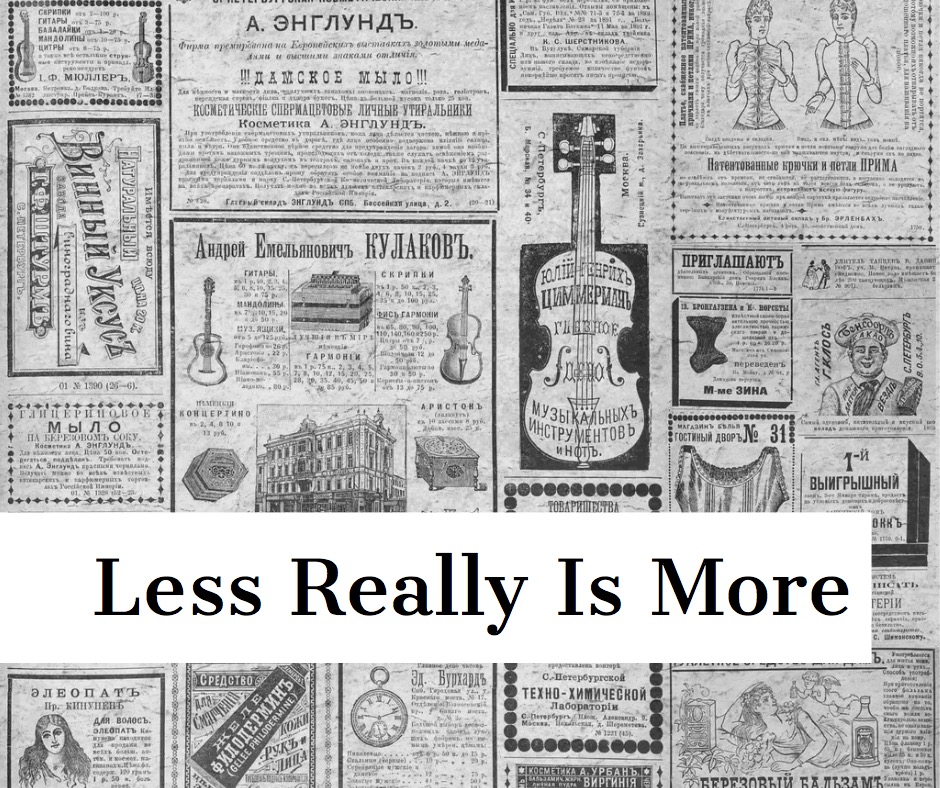
We often hear the phrase, “less is more” in reference to many different situations. When it comes to advertising, that phrase is becoming increasingly relevant every day.
Technology plays a big part in our world, as more communications become digitalized. While advertisers have had to adapt to these changes, print ads remain an important element in business marketing campaigns. One survey asked 1,200 Americans which type of advertisements they trust most, and with a staggering 82 percent of the answers, print ads was the top response. The data reveals that, even in an online age, consumers trust print over pop-up, social media, and video ads. When it comes to making purchasing decisions, customers still rely on print advertisements.
The digital era has resulted in shortened attention spans. According to a Microsoft study conducted in 2015, average attention spans have decreased from 12 seconds in 2000, to eight seconds. So, what does this mean for advertisers?
The days when ads contained bulky paragraphs and tons of information are over. You only have a few seconds to make an impression on consumers. Because you must convey your message quickly and clearly, every sentence and graphic should have a purpose.
Print ads should contain limited text. Many advertisers want to make sure consumers have all the information they need and, as a result, they overdo it. Avoid the urge to include every possible detail or your ad could resemble a page from a novel—rather than a promotion. If the ad is cluttered with text, potential customers will scan rather than read—or even worse, skip—your ad altogether.
With shortened attention spans, you need to engage consumers and relay information quickly. One good way to accomplish that goal is to use bullet points. Bullet points allow you to provide detailed information in an organized and appealing way. Bullet points also allow readers to follow along easily, without feeling overwhelmed by information.
Using eye-catching graphics and fonts is another great way to get your message across to consumers. Your company logo and product images will capture a reader’s attention. Your slogan and product or service description should appear in easy-to-read fonts. Images and text will draw potential customers to your ad by their appearance, while conveying important details quickly.
White space is an often-overlooked print advertising feature. White space is the blank space within your printed marketing materials. Regardless of its actual color, white space helps declutter and organize graphics and text, thereby emphasizing the details you want your customers to notice.
Digital has indeed changed the marketing landscape. Advertisers that adapt will thrive in this new age. But if your advertisements remain cluttered, readers will lose interest and your message will be lost. Remember, you only have a few seconds before the reader begins to lose focus. By keeping your advertisements brief, organized, and eye-appealing, your business can communicate important information quickly while attracting new customers.

